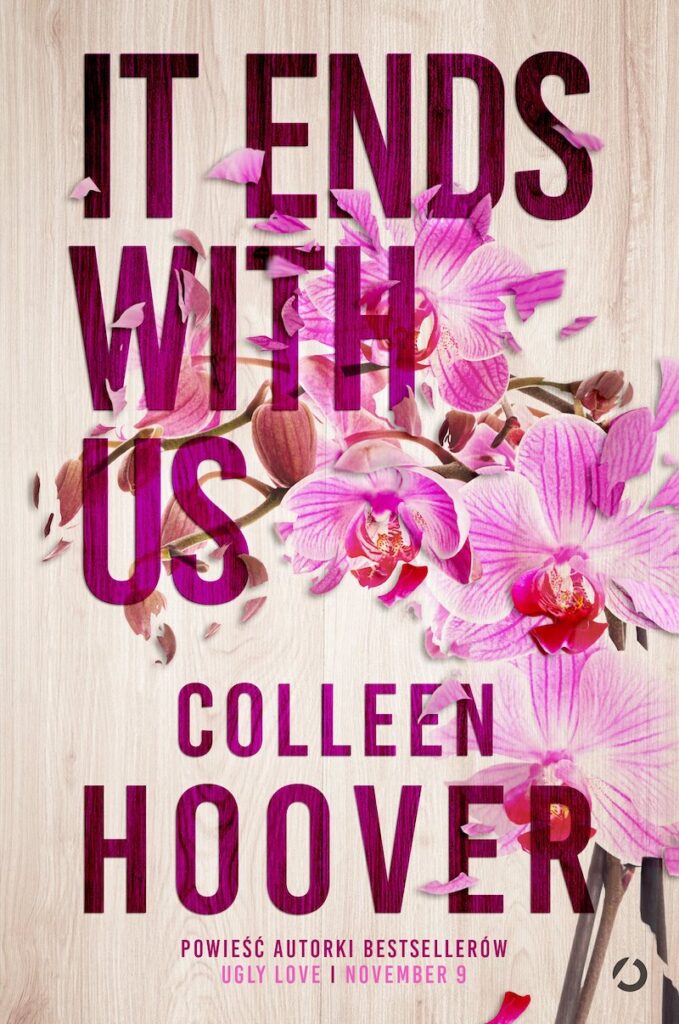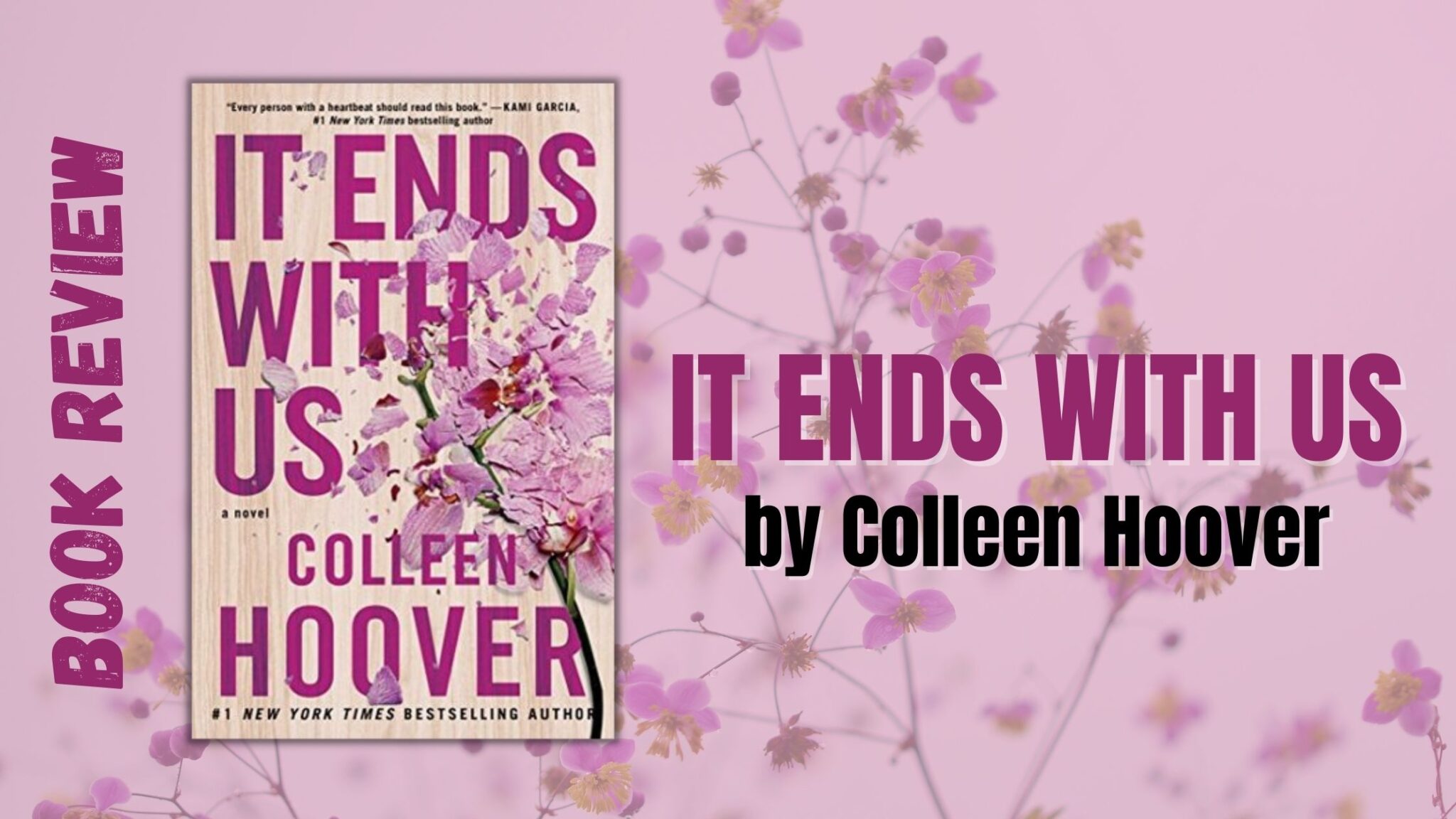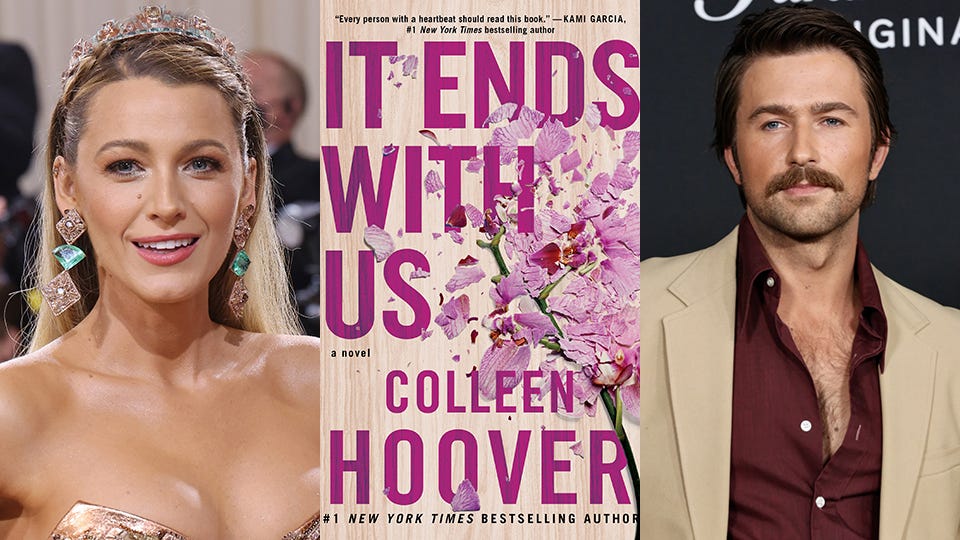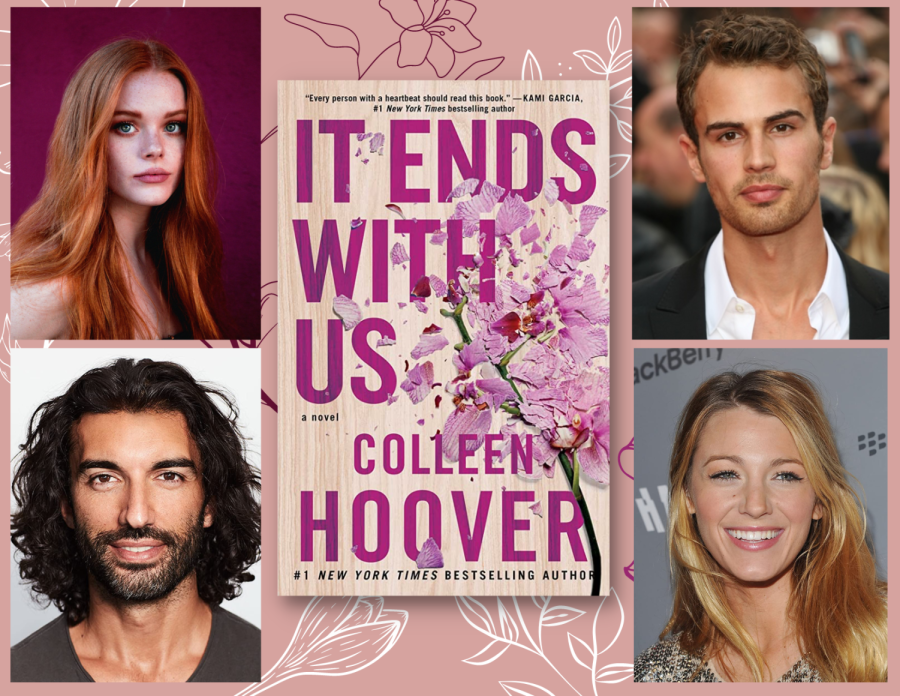It Ends With Us: A Comparative Analysis of the Book and Film Adaptation
Related Articles: It Ends With Us: A Comparative Analysis of the Book and Film Adaptation
Introduction
With enthusiasm, let’s navigate through the intriguing topic related to It Ends With Us: A Comparative Analysis of the Book and Film Adaptation. Let’s weave interesting information and offer fresh perspectives to the readers.
Table of Content
- 1 Related Articles: It Ends With Us: A Comparative Analysis of the Book and Film Adaptation
- 2 Introduction
- 3 It Ends With Us: A Comparative Analysis of the Book and Film Adaptation
- 3.1 The Book: A Literary Exploration of Love, Trauma, and Resilience
- 3.2 The Film: A Visual Interpretation of the Book’s Core Themes
- 3.3 A Comparative Analysis: Exploring the Strengths and Limitations of Both Mediums
- 3.4 Related Searches: A Deeper Dive into It Ends With Us
- 3.5 FAQs: Addressing Common Questions about It Ends With Us
- 3.6 Tips for Engaging with It Ends With Us
- 3.7 Conclusion: Exploring the Enduring Impact of It Ends With Us
- 4 Closure
It Ends With Us: A Comparative Analysis of the Book and Film Adaptation

Colleen Hoover’s It Ends With Us has captivated readers worldwide, becoming a modern literary phenomenon. The novel, a poignant exploration of love, trauma, and resilience, has now been adapted into a film, sparking a wave of interest and generating comparisons between the two mediums. This analysis delves into the intricacies of the book and film, exploring their similarities, differences, and overall impact.
The Book: A Literary Exploration of Love, Trauma, and Resilience
It Ends With Us is a deeply personal and emotionally charged novel that follows the story of Lily Bloom, a young florist who falls in love with Ryle Kincaid, a successful neurosurgeon. The narrative unfolds as a tapestry of Lily’s past, present, and future, revealing the complexities of her relationships and the scars left by her abusive father.
Key Themes and Elements:
- Love and Relationships: The novel explores the intricacies of love, showcasing its transformative power while also highlighting its potential for harm. Lily’s relationships with Ryle, her childhood sweetheart Atlas Corrigan, and her parents are intricately woven, demonstrating the different facets of love and its impact on individual growth.
- Trauma and Healing: The novel delves into the profound impact of trauma, particularly domestic violence, on Lily’s life. Through her journey, Hoover masterfully portrays the long-lasting effects of abuse and the arduous process of healing.
- Resilience and Self-Discovery: Despite the challenges she faces, Lily demonstrates remarkable resilience, ultimately finding strength and self-discovery through her experiences. The novel emphasizes the power of personal growth and the importance of seeking support in overcoming adversity.
- Second Chance Romance: The novel incorporates elements of second chance romance, adding another layer of complexity to Lily’s journey. The re-emergence of Atlas in her life presents her with a choice between her past and her present, forcing her to confront her feelings and desires.
Critical Reception and Impact:
It Ends With Us garnered widespread acclaim, becoming a New York Times bestseller and a phenomenon on social media. Readers resonated with Lily’s story, praising Hoover’s ability to capture the raw emotions and complexities of love, trauma, and healing. The novel sparked conversations about domestic violence, mental health, and the importance of seeking support. Its impact extends beyond entertainment, serving as a catalyst for introspection and empathy.
The Film: A Visual Interpretation of the Book’s Core Themes
The film adaptation of It Ends With Us seeks to translate the novel’s emotional depth and intricate narrative onto the screen. It stars Blake Lively as Lily Bloom, Justin Baldoni as Ryle Kincaid, and Sam Claflin as Atlas Corrigan.
Key Similarities and Differences:
- Character Development: The film maintains the core personalities and relationships from the book, with Lily, Ryle, and Atlas remaining central figures. However, the film’s condensed format necessitates certain modifications to character development, focusing primarily on the most pivotal aspects of their journeys.
- Plot and Pace: While the film stays true to the overarching plot, it condenses certain events and timelines to fit within the cinematic medium. This can lead to a faster pace and a more streamlined narrative, potentially sacrificing some of the nuanced character development found in the book.
- Visual Storytelling: The film utilizes visual storytelling techniques to enhance the emotional impact of the narrative. Cinematography, sound design, and music play a crucial role in conveying the characters’ inner turmoil and the complexities of their relationships.
- Emotional Resonance: The film strives to maintain the emotional core of the book, relying on strong performances and evocative scenes to evoke similar feelings of empathy, sadness, and hope.
Critical Reception and Impact:
The film adaptation has received mixed reviews, with some praising its faithfulness to the book’s core themes and the performances of the lead actors, while others criticize its pacing and perceived lack of depth compared to the novel. Despite the mixed reception, the film has undoubtedly attracted a wider audience, potentially introducing new readers to Colleen Hoover’s work.
A Comparative Analysis: Exploring the Strengths and Limitations of Both Mediums
The book and film versions of It Ends With Us offer distinct perspectives on the same story, each with its own strengths and limitations.
Strengths of the Book:
- Depth and Nuance: The book provides a more in-depth exploration of characters, their motivations, and the complexities of their relationships. The extended narrative allows for a more nuanced portrayal of Lily’s journey, her internal struggles, and the evolution of her feelings.
- Emotional Immersion: The novel’s immersive prose and detailed descriptions create a deeper emotional connection with the characters and their experiences. Readers can fully immerse themselves in Lily’s world, feeling her pain, joy, and every step of her healing process.
- Freedom of Interpretation: The book provides more freedom for readers to interpret the story and characters, allowing for individual perspectives and interpretations.
Limitations of the Book:
- Pace and Length: The novel’s length and slower pace can be challenging for some readers, particularly those seeking a faster-paced narrative.
Strengths of the Film:
- Visual Storytelling: The film’s visual storytelling techniques, including cinematography, sound design, and music, enhance the emotional impact of the narrative, creating a more visceral experience for viewers.
- Accessibility: The film format makes the story more accessible to a wider audience, potentially introducing new readers to Colleen Hoover’s work.
Limitations of the Film:
- Condensed Narrative: The film’s condensed format necessitates certain modifications to the plot and character development, potentially sacrificing some of the nuanced aspects found in the book.
- Limited Depth: The film’s shorter runtime can limit the depth of character exploration and the intricacies of their relationships, potentially leaving some viewers wanting more.
Related Searches: A Deeper Dive into It Ends With Us
Exploring the related searches associated with It Ends With Us provides a deeper understanding of the novel’s impact and the diverse perspectives it has sparked:
- It Ends With Us Ending Explained: This search reflects the desire to understand the complex and multi-layered conclusion of the novel, seeking clarification on the choices made by Lily and the implications for her future.
- It Ends With Us Book Review: This search showcases the widespread interest in critical analysis and reader perspectives on the novel, seeking insights into its strengths, weaknesses, and overall impact.
- It Ends With Us Movie Review: This search reflects the audience’s interest in evaluating the film adaptation, comparing it to the book and exploring its success in capturing the essence of the story.
- It Ends With Us Characters: This search highlights the fascination with the characters, their motivations, and their development throughout the narrative, revealing the depth and complexity of their personalities.
- It Ends With Us Quotes: This search reflects the enduring impact of the novel’s poignant and insightful quotes, showcasing the power of language to capture emotions and universal truths.
- It Ends With Us Book Club Discussion Questions: This search reflects the desire to engage in deeper discussions about the novel, exploring its themes, characters, and overall impact with a community of readers.
- It Ends With Us Similar Books: This search demonstrates the interest in discovering other works that explore similar themes of love, trauma, and resilience, seeking recommendations for further exploration.
- It Ends With Us Sequel: This search reflects the anticipation for a sequel to the novel, hoping for further insights into Lily’s life and the resolution of unresolved storylines.
FAQs: Addressing Common Questions about It Ends With Us
Q: Is It Ends With Us a good book to read?
A: Whether or not It Ends With Us is a good book for you depends on your personal preferences and reading interests. The novel explores complex and emotionally charged themes, making it a powerful and thought-provoking read for many. However, it may not be suitable for readers who are sensitive to topics such as domestic violence and trauma.
Q: Is the film adaptation faithful to the book?
A: The film adaptation stays true to the core themes and plot points of the book, but it makes certain modifications to condense the narrative and fit within the cinematic medium. Some viewers may find the film to be a faithful adaptation, while others may feel that it sacrifices some of the nuance and depth found in the novel.
Q: Is the book a romance novel?
A: While It Ends With Us features romantic relationships, it is more than just a typical romance novel. The novel delves into complex themes of love, trauma, and healing, making it a more nuanced and emotionally layered story.
Q: What is the main message of It Ends With Us?
A: The novel’s main message revolves around the power of resilience, self-discovery, and seeking support in overcoming adversity. It emphasizes the importance of recognizing and addressing trauma, as well as the transformative power of love and forgiveness.
Q: Should I read the book before watching the film?
A: Reading the book before watching the film can provide a deeper understanding of the characters, their motivations, and the complexities of their relationships. However, the film adaptation can be enjoyed independently, offering a visual interpretation of the story with its own unique strengths.
Tips for Engaging with It Ends With Us
- Read the book with an open mind: Be prepared to engage with emotionally charged content and complex themes.
- Allow yourself to feel the emotions: The novel is designed to evoke strong emotions, so don’t be afraid to experience them.
- Consider the characters’ perspectives: Try to understand the motivations and complexities of each character, even those who may seem unlikeable.
- Reflect on the themes: The novel raises important questions about love, trauma, and healing. Take time to reflect on these themes and their impact on your own life.
- Discuss the book with others: Sharing your thoughts and feelings with other readers can enhance your understanding and appreciation of the story.
Conclusion: Exploring the Enduring Impact of It Ends With Us
It Ends With Us continues to resonate with readers and viewers, sparking conversations about love, trauma, and resilience. The novel and film adaptation, while offering distinct perspectives on the same story, both contribute to the ongoing dialogue about these important themes. Whether you choose to experience the story through the pages of the book or the visual storytelling of the film, It Ends With Us offers a powerful and thought-provoking journey into the complexities of human relationships and the enduring strength of the human spirit.








Closure
Thus, we hope this article has provided valuable insights into It Ends With Us: A Comparative Analysis of the Book and Film Adaptation. We thank you for taking the time to read this article. See you in our next article!